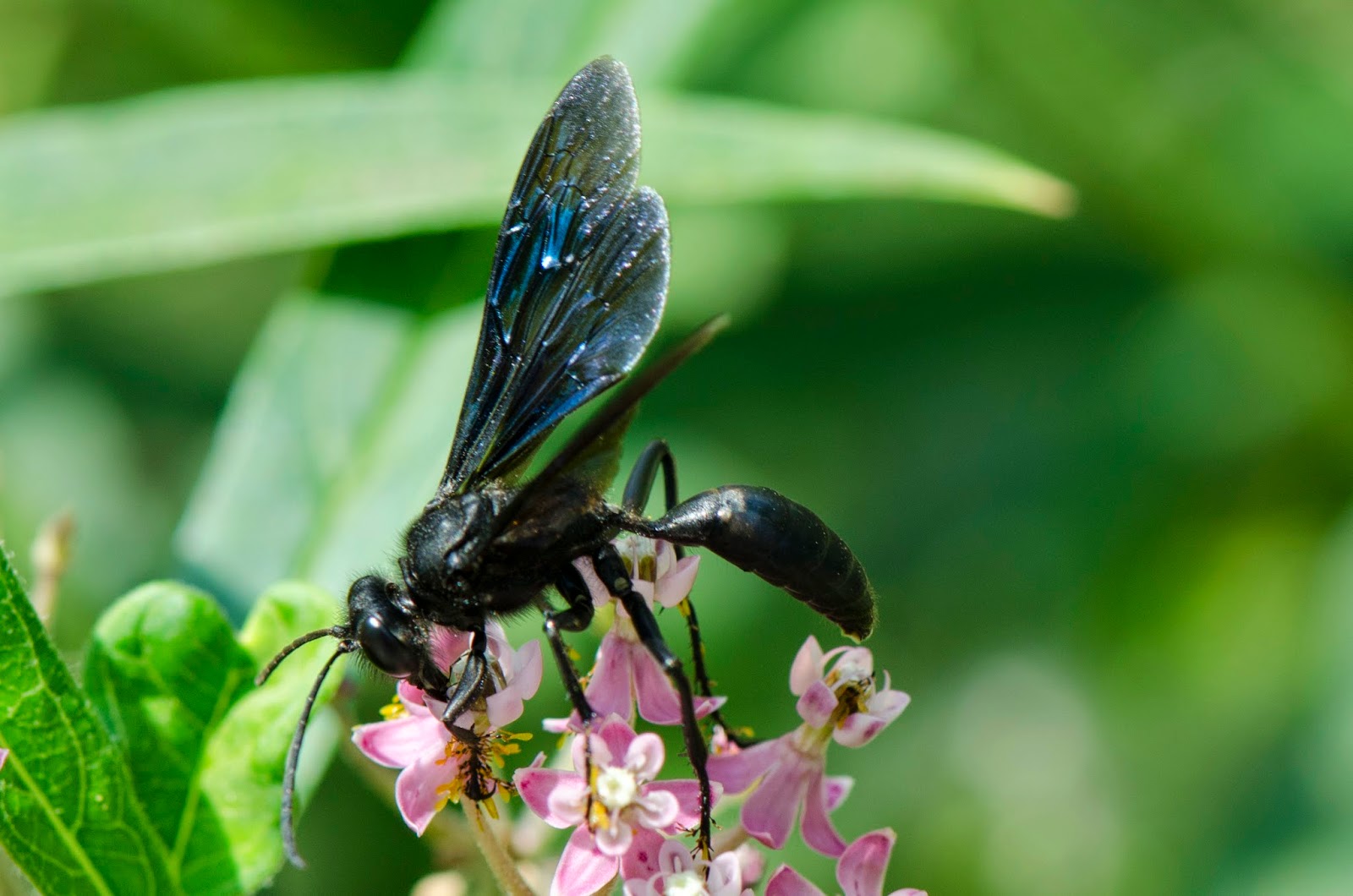The Great Black Wasp, a striking insect known for its stunning appearance and unique behavior, is a marvel of nature that captures the attention of entomologists and nature enthusiasts alike. This remarkable wasp, belonging to the family Sphecidae, is not just another insect; it plays a crucial role in our ecosystem. From its distinctive black coloration to its solitary nesting habits, the Great Black Wasp is a subject of intrigue and admiration.
These wasps are often misidentified due to their resemblance to other black insects. However, their size, behavior, and ecological role set them apart. They are known for their impressive hunting skills, primarily preying on caterpillars, which they use to feed their larvae. The Great Black Wasp's life cycle and reproductive habits are fascinating and highlight the intricacies of nature's design.
Understanding the Great Black Wasp also involves recognizing its significance in pollination and pest control. As they forage for nectar and hunt for prey, they inadvertently contribute to the health of our gardens and ecosystems. This article will delve deeper into the life and habits of the Great Black Wasp, answering common questions and shedding light on why this insect deserves our attention and respect.
What is the Great Black Wasp?
The Great Black Wasp (Sphex pensylvanicus) is a large, solitary wasp native to North America. Characterized by its glossy black body, it can reach lengths of up to 1.5 inches. This wasp is part of the digger wasp family, known for their nesting behaviors. Unlike social wasps, the Great Black Wasp is solitary, meaning each female wasp builds and provisions her own nest.
What Do Great Black Wasps Look Like?
Visually, the Great Black Wasp is striking. Its body is predominantly black, with a metallic sheen that can appear blue or green in certain lights. The wings are transparent, and the legs are long and slender, giving the wasp an elegant appearance. Here are some key identifying features:
- Size: Typically 1 to 1.5 inches long
- Color: Glossy black with iridescent hints
- Wings: Transparent and slightly smoky
- Body shape: Long and slender
Where Can You Find the Great Black Wasp?
The Great Black Wasp is commonly found throughout the United States and parts of Canada. They thrive in open areas such as fields, gardens, and meadows, where flowers are abundant. Their nests are often constructed in sandy or loose soil, making it essential to look closely at the ground when searching for these solitary insects.
What Do Great Black Wasps Eat?
The diet of the Great Black Wasp primarily consists of nectar from flowers and caterpillars. The female wasp hunts for caterpillars, which she paralyzes with her sting and then brings back to her nest to feed her developing larvae. This predatory behavior makes them valuable in controlling caterpillar populations in gardens and agricultural settings.
How Do Great Black Wasps Build Their Nests?
Nest construction is a remarkable aspect of the Great Black Wasp's life cycle. Here’s how they typically build their nests:
- The female locates a suitable site, often in sandy soil.
- She digs a tunnel to create a nest chamber.
- After hunting and paralyzing a caterpillar, she places it in the chamber.
- Finally, she lays an egg on the caterpillar and seals the chamber.
Are Great Black Wasps Dangerous to Humans?
While the Great Black Wasp has a formidable appearance, it is generally not aggressive towards humans. They are solitary and prefer to avoid confrontation. However, if provoked, they can sting. Their sting is not particularly harmful to most people, often described as similar to a bee sting. It is wise to observe these fascinating insects from a distance to minimize any risk of disturbance.
How Do Great Black Wasps Contribute to Ecosystems?
The role of the Great Black Wasp in ecosystems is vital. By preying on caterpillars, they help control pest populations, which can benefit agriculture and gardening. Furthermore, as they forage for nectar, they inadvertently assist in pollination, contributing to the growth and health of various plant species. Their presence indicates a balanced ecosystem, showcasing the interconnectedness of species.
What Makes the Great Black Wasp Unique?
The Great Black Wasp stands out not only for its appearance but also for its solitary lifestyle and hunting prowess. Here are a few aspects that make it unique:
- Solitary nesting behavior
- Impressive hunting skills targeting caterpillars
- Contribution to pollination and pest control
- Minimal aggression towards humans
How Can You Attract Great Black Wasps to Your Garden?
If you're interested in attracting Great Black Wasps to your garden, consider the following tips:
- Plant a variety of nectar-rich flowers.
- Avoid using pesticides that could harm beneficial insects.
- Provide sandy areas for nesting.
- Create a diverse habitat with shrubs and open spaces.
The Great Black Wasp is a remarkable insect, embodying the beauty and complexity of nature. By understanding its behaviors and contributions to the ecosystem, we can appreciate the vital roles these solitary wasps play. Observing them in their natural habitat not only enriches our knowledge of biodiversity but also fosters a deeper respect for the intricate web of life that surrounds us.
You Might Also Like
Unraveling The Mystique Of Fallout Power ArmorDelightful Crab Boil Recipe: A Seafood Feast For All Occasions
Exploring The World Of Anime Lesbian Sex: A Deep Dive Into Representation And Fantasy
Finding The Perfect Home Companion: The Best Home Printer
Transform Your Look: The Ultimate Guide To Permanent Hair Dye
Article Recommendations
- Justin Fields Wife
- Lee Hyun Woo Relationships
- Zin Manga
- Toby Keiths Car Collection
- Bobbye Brooks Oliver
- Annette Badland
- Tim Miller Husband Tyler Jameson
- Streameastis
- Liam Payne Fork
- Rod Argent


